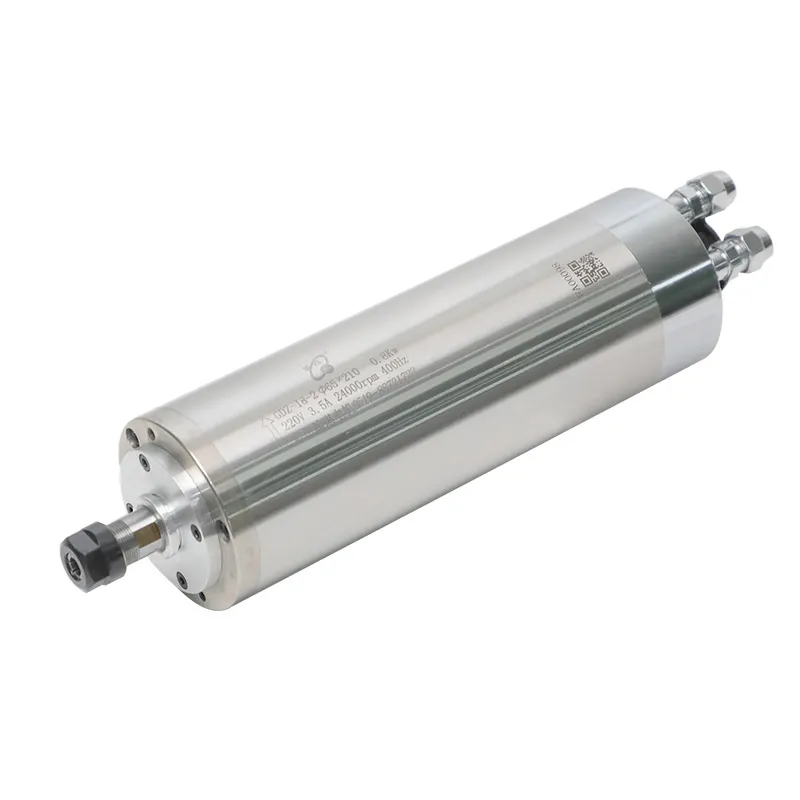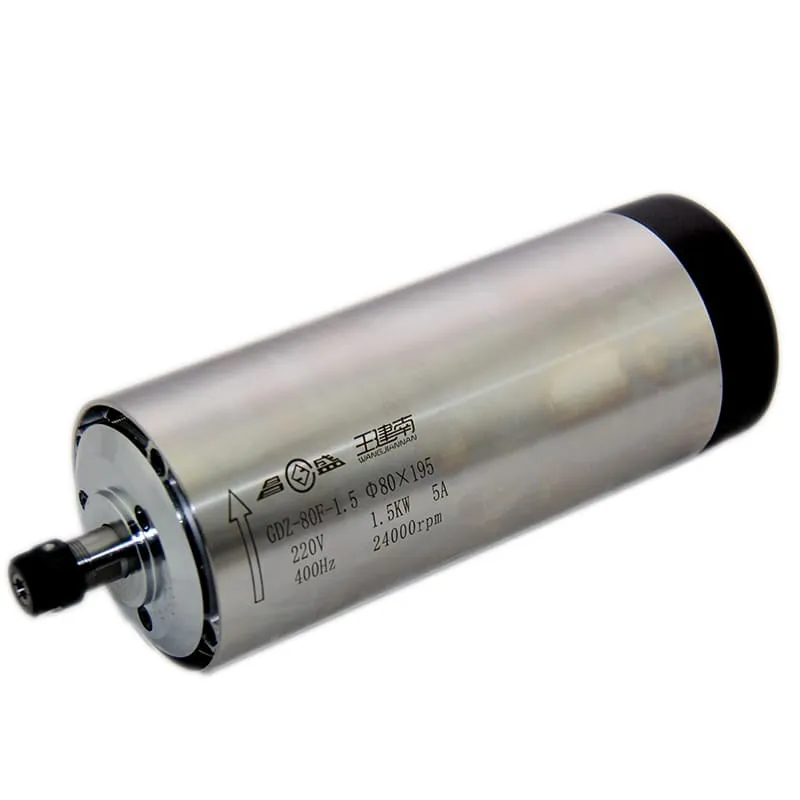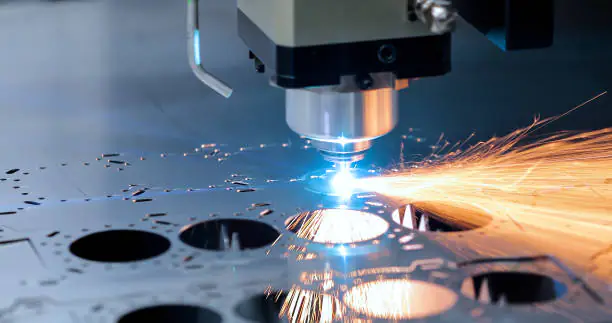Building your own CNC machine can be a rewarding project that gives you a deep understanding of how these powerful tools work. Whether you’re a seasoned hobbyist or new to CNC, creating your own machine can save money, provide customization, and give you a sense of accomplishment. In this guide, we will cover every part of the process, from planning and selecting materials to the assembly and testing phases. Let’s embark on this exciting journey and learn how to build a CNC machine that suits your needs.
Understanding CNC Machines
A CNC machine (Computer Numerical Control) is a device controlled by a computer, capable of executing precise cuts and movements. It’s a versatile tool used for cutting, engraving, and prototyping materials like wood, metal, and plastic. CNC machines utilize G-code, a programming language that dictates their movements and cutting paths.
A CNC machine comprises several key parts:
- Frame: Provides structure and support.
- Gantry: Houses the tool head and moves along the X and Y axes.
- Spindle: The component responsible for cutting, drilling, or engraving.
- Electronics: The computer control systems, including stepper motors and drivers.
Let’s explore how you can build your very own CNC machine, starting with planning and material selection.
Planning Your CNC Machine Build
1. Determine Your Goals
The first step in building a CNC machine is to establish what you intend to use it for. Different applications will dictate the design and parts needed for your machine.
- Woodworking: A CNC router for wood might require a powerful spindle but not as much rigidity as a CNC designed for cutting metal.
- Metalworking: Requires a more robust frame and a water-cooled spindle to handle tougher materials and prevent overheating.
- Size Considerations: Consider the size of the cutting area. Do you need a small machine for intricate parts or a larger one for furniture-sized workpieces?
2. Create a Design Plan
Using a CAD (Computer-Aided Design) program is vital for planning your CNC machine. Fusion 360 or SketchUp are popular choices that allow you to model your entire build before committing to parts.
- Cutting Envelope: The cutting envelope defines the area your machine can work within. Design with the intention of optimizing the use of space.
- Frame Dimensions: Draft the frame’s height, length, and width based on the material you plan to cut.
Gathering Components for Your CNC Machine
1. Frame and Base
The frame is the backbone of your CNC machine. It needs to be stable, rigid, and able to support the weight of the moving components.
- Material Choice: Use either aluminum extrusions or steel tubing. Aluminum is lighter and easier to work with, whereas steel provides greater rigidity.
- Assembly: Connect the frame components using corner brackets and M5 bolts. Precision is crucial here to ensure a square and level build.
2. Gantry System and Linear Motion
The gantry is the component that holds the spindle and moves across the X and Y axes.
- Linear Rails and Bearings: Use linear bearings and rails to allow the gantry to move smoothly. High-quality linear rails are crucial for achieving precise cuts.
- Ball Screws or Timing Belts: You can use either ball screws or timing belts for linear motion. Ball screws provide accuracy, while timing belts are more cost-effective but may sacrifice some precision.
“High-quality linear rails and ball screws ensure smoother motion, better precision, and longer machine lifespan.”
3. Stepper Motors and Drivers
The stepper motors are responsible for moving the gantry and spindle. Choose motors based on the required torque and speed.
- NEMA 23 Stepper Motors: These are ideal for most mid-range CNC builds, providing enough power for cutting wood, plastic, and even light metal.
- Individual Motor Drivers: These control the power and movement of the stepper motors. Look for drivers that support micro-stepping for increased precision.
4. Spindle Selection
The spindle is what actually does the cutting. There are several types of spindles, each suited to different applications.
- Air-Cooled Spindle: Easier to install and maintain, suitable for lighter workloads. For example, the 2.2KW ER20 Air-Cooled Spindle
 .
. - Water-Cooled Spindle: Provides better cooling, ideal for heavy-duty metalwork. Consider the 24000RPM 0.8KW ER11 Water-Cooled Spindle for extended use.

Building Your CNC Machine: Step-by-Step
1. Assemble the Frame
Start by assembling the frame. Ensure all parts are aligned correctly to avoid issues later on.
- Attach the Base: Use corner brackets and bolts to attach the base to the rest of the frame. Check for squareness with a carpenter’s square.
- Secure the Gantry: Install the gantry across the frame using linear rails. Make sure it moves smoothly along the rails without any resistance.
2. Install the Ball Screws and Linear Rails
Install the linear rails and ball screws to provide accurate motion to the gantry.
- Ball Screw Mounting: Use bearing blocks to hold the ball screw in place, ensuring there’s no play or backlash.
- Linear Rail Placement: Position the rails parallel to each other to avoid skewing during gantry movement.
3. Mount the Spindle and Electronics
The spindle and electronics are the functional heart of the CNC machine.
- Spindle Mounting: Attach the spindle to the gantry using a motor mount. Make sure it’s firmly secured to prevent vibrations.
- Electronics Box: Mount the stepper drivers, power supply, and cooling fans in an enclosure. Make sure the power supply is sufficient for your motor and spindle requirements.
4. Wiring and Connecting Electronics
Connect all the electronic components, including stepper motors, spindle, and drivers, to the main control board. Make sure all connections are secure and tidy.
- Cable Management: Use drag chains for managing cables that move with the gantry. This helps prevent tangling or wear.
- Limit Switches: Install limit switches on each axis to define the safe operating range and prevent the machine from moving beyond its physical limits.
Software Setup and Calibration
1. Choosing the Right Software
Your CNC machine requires both CAD software to design parts and CAM software to create the toolpaths. Mach3 or GRBL are popular choices for controlling CNC machines, while Fusion 360 is a common CAD option.
- CAD (Design Phase): Use CAD software to draw the parts you want to machine.
- CAM (Toolpath Generation): CAM software converts CAD designs into G-code that the machine can understand.
2. Calibration
Once your machine is built, it’s essential to calibrate it to ensure accuracy.
- Axis Calibration: Measure and verify that the movement of the X, Y, and Z axes matches the distances commanded by the software.
- Spindle Speed Control: Ensure the spindle’s RPM matches the software settings. Proper speed control will affect the cutting speed and surface finish.
Testing and Initial Runs
Before using the CNC machine for full-scale projects, conduct test runs to identify any potential issues.
1. Test Movements
Run the machine along the X, Y, and Z axes without engaging the spindle to verify smooth movement.
- Check for Vibrations: Listen and feel for any vibrations that could indicate misalignment or looseness.
- Adjust as Needed: If the gantry is not moving smoothly, recalibrate and ensure all parts are properly tightened.
2. Cut Test Pieces
Once the basic movement tests are complete, it’s time to do a test cut.
- Soft Material Test: Use foam or MDF for initial test runs. These materials are forgiving and allow you to tweak the machine without damaging expensive parts.
- Check Accuracy: Measure the cut piece to see if it meets the dimensions specified in your CAD drawing.
Maintenance and Upgrades
To keep your CNC machine performing well, regular maintenance is key.
1. Regular Lubrication
Linear bearings and ball screws require regular lubrication to operate smoothly.
- Grease Application: Apply grease to all moving parts to minimize wear and tear.
- Clean Rails: Dust and debris can interfere with linear motion, so make sure to regularly clean the rails.
2. Upgrading Components
As your skills grow, you may want to upgrade parts of your CNC machine for better performance.
- Spindle Upgrade: Consider upgrading to a more powerful spindle if you want to work with harder materials. Check out options like the 1.5KW ER11 Round Air-Cooled Spindle.

- Control Board: Upgrade to a more advanced control board that offers smoother operation and better compatibility with software.
Frequently Asked Questions About Building a CNC Machine
1. How much does it cost to build a CNC machine?
The cost depends on the size and capabilities of the CNC machine. For a small DIY CNC, expect to spend $500 to $2000. Larger machines for metalworking may cost significantly more.
2. Is it hard to build a CNC machine from scratch?
It can be challenging, especially for beginners, but with the right guidance and patience, building a CNC machine is achievable. Planning and careful measurement are crucial to success.
3. Can I use a 3D printer frame for a CNC machine?
Yes, some people repurpose 3D printer frames to build CNC routers for cutting softer materials like wood or plastic. However, they may not be rigid enough for metals.
4. What materials can I cut with a homemade CNC machine?
This depends on the spindle and the rigidity of the machine. Most DIY CNCs can cut wood, plastics, and some soft metals like aluminum if built well.
5. How do I ensure accuracy in my CNC build?
To ensure accuracy, make sure your frame is rigid, your ball screws are properly mounted, and your linear rails are aligned precisely. Calibration is also essential for accurate cuts.
Conclusion
Building a CNC machine can be an incredibly satisfying project that not only saves money but also allows for significant customization. From designing the frame and selecting components like the spindle and stepper motors, to assembling the machine and conducting test runs, each step is a learning experience. The resulting CNC machine is not just a tool but a testament to your skills and dedication.
If you’re looking to get started on your CNC build, make sure you have high-quality components that ensure precision and longevity. For spindles that are reliable and effective, visit Spindle Motor Shop to explore options like the 1.5KW ER11 Round Air-Cooled Spindle and more. Equip yourself with the right parts and embark on your CNC building journey today!

